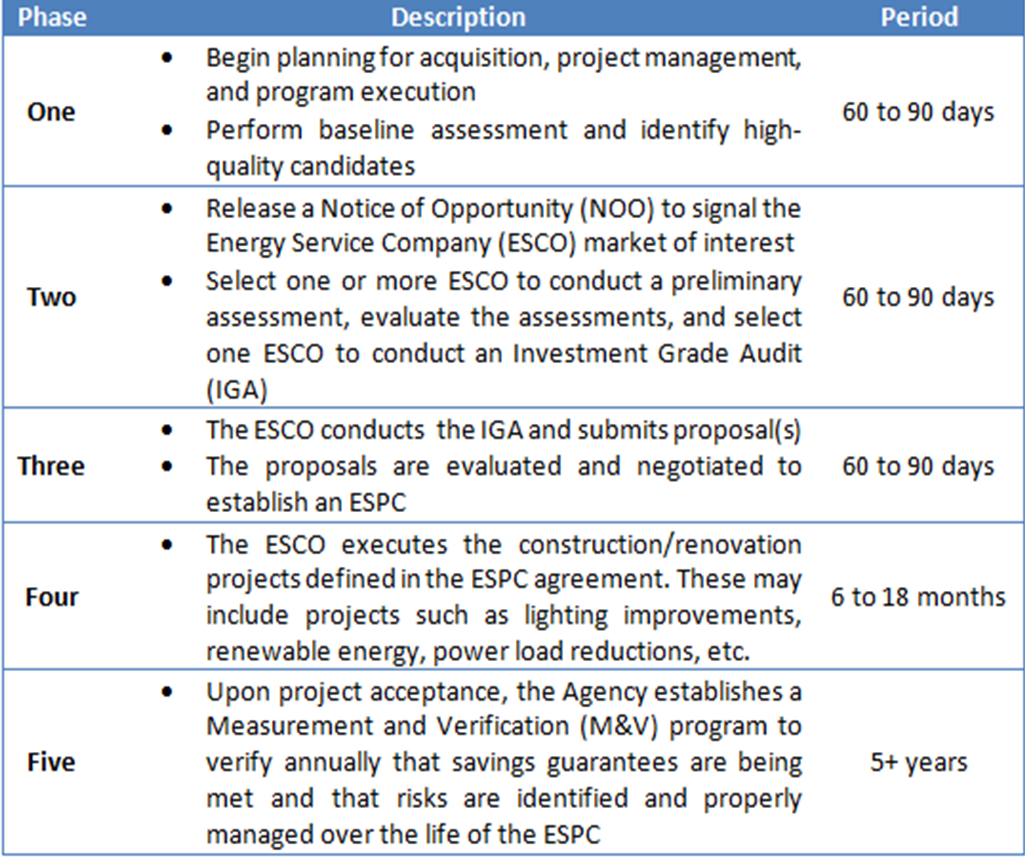Energy Savings Performance Contracts in the Federal Marketplace
Saving energy to lower utilities costs has been an effective facilities management strategy for decades, and has clear benefits for the environment as well. Rising energy prices and economic difficulties are inspiring owners and operators to look at alternatives when integrating Energy Conservation Measures (ECM) into capital investment plans.
Energy Savings Performance Contracts (ESPC) inject alternative financing mechanisms into an otherwise more traditional asset management function of capital improvement planning and implementation. Until recently, ESPCs were used sporadically in the Federal market. However, a recent Presidential memorandum has sparked a flurry of activity by government agencies.
In December of 2011, President Obama released a memorandum that requires government agencies to utilize a Department of Energy (DOE) contract vehicle to engage the private sector for two billion dollars in ESPC by January 2014. This mandate is being coordinated through the DOE and the Office of Management and Budget (OMB), which will provide technical assistance and oversight for government-wide programs.
The table below indicates the anticipated requirements of each phase:
New Presidential Memo on Energy Savings Performance Contracts (ESPC)
This past month, December 2nd, 2011, the President issued follow-up guidance and support for Executive Order 13514 in the form of a memo for Energy Savings Performance Contracts (ESPC). The concept is industry-proven and has been around for a while – just check out this 2002 EPA presentation on the benefits of ESPC.An ESPC is based upon the authorization activated in 1992 and 2005 by the Energy Policy Act (EPAct) that allows Agencies to use private sector financing mechanisms for energy conservation projects. This authority was supported and enhanced with the issuance later EPAct versions, as well as the issuance of the Energy Independence and Security Act (EISA) of 2007. The recent Presidential Memorandum directs Agencies in three main areas that include the following: 1. Implement and Prioritize Energy Conservation Measures (ECM). Agencies' capital investment plans should integrate ECMs that have a payback period of less than 10 years. Potential projects are to be prioritized return on investment. ESPC will be a major vehicle for funding these projects, however direct appropriations should also be considered. There is a mandated goal of $2 billion in ESPCs by January 2014.
2. Complete Required Energy and Water Evaluations. Section 432 of EISA2007 establishes a framework for tracking, reporting, and benchmarking energy initiatives. Agencies use Department of Energy's Compliance Tracking System (CTS) to reporting on completed ESPC projects and perform regular assessments of facilities to ensure compliance and capture performance metrics.
3. Maintain Transparency and Accountability. This section of the memo directs Agencies to automate data collection and reporting, thus reducing the level of effort and increasing efficiencies. Agencies are encouraged to “connect meters and advanced metering devices to enterprise energy management systems to streamline and optimize measurement, management, and reporting of facility energy use”. These mandates are designed to help the US Government realize cost savings while collecting data for business intelligence efforts for continuous improvement and better portfolio management. As time passes, these directives will drive down the amount the USG energy bills, benefit the taxpayer, and stimulate an important part of our innovation economy.


